Foods that Lower Blood Pressure
You may not realize it, but foods that lower blood pressure can also help you lose weight. I've provided a list of these foods below.
Following the food list are some tips on how to include more of these foods into your diet.
Most foods that lower blood pressure are low in these four things: 1) salt and other forms of sodium, 2) saturated fat, 3) total fat, and 4) overall calories. Keep this in mind as you do your shopping and when you eat out.
Even though these foods are helpful for managing blood pressure, you shouldn't think of them as blood pressure "medications", however. Only medicine prescribed by your doctor can lower your blood pressure directly.
Which types of foods are we talking about? Most foods that lower blood pressure fall into these categories:
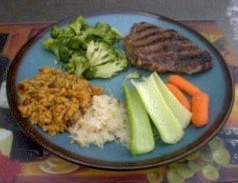
Whole grains
Vegetables
Fruits
Low-fat or fat-free dairy
Lean meat, poultry, and fish
Healthy fats and oils
The foods that lower blood pressure don't do so like a heart medication does. Rather, they normalize blood pressure in a natural, gradual way.
These foods optimize the conditions in your body that promote healthy cardiovascular function. As part of this process, they help you reach and maintain a healthy weight.
List of Foods that Lower Blood Pressure
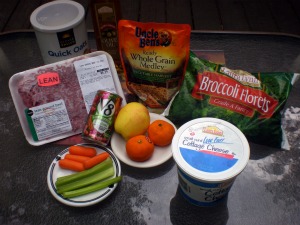
Following is the list of specific foods that lower blood pressure.
This list doesn't include every possible blood pressure lowering food. It is lengthy enough to give you a good understanding of the types of foods you should be eating more of to help manage your blood pressure.
I gathered this information from National Institutes of Health (NIH) data, U.S. Department of Agriculture tables and charts, and other sources.
Note: At the bottom of this page you can download a free copy of the government publication, Guide to Lowering Blood Pressure.
1) WHOLE GRAINS
Barley - especially products labeled "whole barley", "hulled barley", or "hull-less barley"
Buckwheat - for example, buckwheat pancake mix
Brown rice - such as Uncle Ben's 90 second whole grain rice (a staple of mine)
Corn
Oats - I especially like microwaveable Quaker 1-Minute oats for the convenience.
Rye bread
Sprouted whole grain bread
Whole wheat bread
Wild rice - which is often actually the seed from edible types of grass
Note: Bread labeled "Wheat Bread" is not always made from whole grains. This bread is often made with a large proportion of white flour mixed with a small amount of wheat. Look for the phrase whole grain or whole wheat on the label.
The whole grains above are some of the most common in Western countries. There are less popular but very healthy whole grains you may want to try, including amaranth, bulgur, farro, grano, kamut, kaniwa, millet, quinoa, sorghum, spelt, teff, and triticale. All are included in the list of foods that lower blood pressure.
2) VEGETABLES, ROOTS, & LEGUMES
A list of all edible vegetables would be very long, of course. To remind you of the options available, here are some common ones that I often eat.
Asparagus
Artichoke
Avocadoes
Beans - all types, including black beans, butter beans, green beans, fava beans, garbanzo beans, navy beans, pinto beans,
Bell peppers
Black-eyed peas
Broccoli
Brussels sprout
Cabbage
Cauliflower
Celery
Cucumbers
Lentils
Lettuce
Okra
Onions
Peanuts - they're vegetables, not nuts!
Peas
Potatoes - especially red and sweet potatoes, which have a low glycemic index
Pumpkin
Radishes
Snow peas
Spinach
Squash
Tomatoes
Zucchini
3) FRUITS
Fruits that often find their way onto my plate include:
Apples
Bananas
Cherries
Cranberries
Dried fruit - such as craisins, prunes, raisins
Grapes
Lemons & limes
Mango
Olives
Oranges & tangerines
Papaya
Peaches
Pears
Pineapple
Plums
Raspberries
Strawberries
4) DAIRY (Low fat or fat free varieties)
Not everyone can consume dairy foods. But if you can, consider these since healthy dairy is one of the category of foods that lower blood pressure:
Cheese - I recently found fat-free shredded cheddar and mozzarella at my local supermarket
Cottage cheese
Milk
Yogurt
Note: Some milk products, such as yogurt, often include a lot of added sugar. Be sure to check the nutrition label.
You need to be careful with dairy products, because they often include unacceptable amounts of saturated fat. To avoid this, choose the low-fat or non-fat varieties.
5) MEAT, POULTRY, FISH
Chicken - especially skinless chicken breast, which is high in protein and very low in fat
Steak - especially the leaner cuts which include top round, eye round, top sirloin, beef sirloin. For ground beef, get the 90% lean or better variety.
Fish - all types, but especially the leaner varieties such as tilapia. Try to eat one or two servings of salmon per week if possible. Although salmon is high in fat, it's the healthy type of fat including essential omega fatty acids.
Pork - leaner cuts include pork tenderloin, pork loin chops, and boneless pork loin roast
Lamb - especially leg of lamb
Trim any excess fat from meat before cooking.
6) FATS and OILS
Some oils are quite bad for you, while others provide significant and necessary health benefits. Healthy oils include:
Extra virgin olive oil
Canola oil
Fish oil - not for cooking purposes; rather, liquid fish oil is a wonderful health supplement
Grapeseed oil
Flaxseed oil
Sunflower oil
Among the foods that lower blood pressure, other healthy oils which contain more flavor include avocado oil, peanut oil, sesame oil, almond, hazelnut, or macadamia nut oil, pumpkin seed oil, and walnut oil.
Note: Avoid oils that are high in saturated fat and/or trans fat. Stay away from oils labeled as "polyunsaturated" or "hydrogenated" oil. For more information on which oils are healthiest, see my healthiest cooking oils page.
Sources: MayoClinic.com, LiveStrong.com, KitchenDailyl.com, US Dept. of Agriculture, American Heart Association, and other similar authorities.
It can be a challenge to include healthy foods in your diet if you are not used to eating them. So below are a few thoughts and ideas from my own experience that may help.
How Do These Foods Lower Blood Pressure?
Substituting the foods that lower blood pressure for less-healthy foods in your diet helps lower your blood pressure in at least two ways.
Weight Loss. Many of these foods are low in calories, fat, and sugar. It should be obvious that eating these foods instead of fatty, sugary, or high-calorie food can lead to weight loss.
Why is that important for heart health? According to the National Institute of Health (NIH), losing just 10 pounds can decrease your blood pressure significantly.
Sodium Intake. Another factor affecting blood pressure is how much salt (and other forms of sodium) you consume.
According to cardiovascular experts, decreasing sodium intake is the number one way to lower blood pressure, especially if you are consuming significantly more sodium than is generally recommended.
To recap, two effective action steps you can take to help manage your blood pressure are:
Lose weight (if you are overweight)
Decrease your salt intake
The third step, of course, could be to take medication that lowers blood pressure, as prescribed by your physician. Consult with your doctor about that.
Foods That Lower Blood Pressure - Tips
Below are some tips on each of the types of foods that lower blood pressure. This is not meant to be a comprehensive explanation. They're just some helpful ideas that I have found useful when making adjustments to my own eating patterns.
Whole Grains. Avoid products made from "white flour". These include white bread, pastries, white flour pasta, and so on. This type of flour is typically lacking in vitamins and other nutrients, and is often associated with foods that can make you fat.
Examples of white flour foods to eat rarely: white bread, white rice, pasta made from white flour.
Include more whole grain and whole wheat products in your diet. Sprouted whole grain bread is one of the healthiest types of sliced bread you can buy. Brown rice is another very healthy carbohydrate you can eat as a substitute for white flour foods.
TIP: When buying sliced bread, avoid breads labeled "Wheat Bread". These are often just white flour breads with coloring added or diluted with a large amount of white flour. Look for the words "Whole Wheat" or "Whole Grain" on the label.
Vegetables. Many people don't enjoy eating vegetables. But since vegetables are high in fiber, low in calories and fat, and high in vitamins, it is important to include them in your diet. By promoting weight loss, they are one of the foods that lower blood pressure - so eat your vegetables!
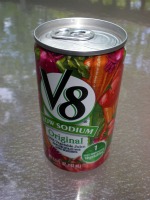
The Dietary Approach to Stop Hypertension (DASH) eating plan recommended by the US government suggests 4 to 5 servings of vegetables per day. This is a difficult target for most people (myself included). So one trick I've adopted is to drink low-sodium V-8 vegetable juice.
You should probably avoid drinking "regular" V-8, because the salt content is high. However, the Low Sodium variety of V-8 is an excellent way to get a serving of vegetables in your body quickly.
The small, 6 ounce can provides one serving of vegetables. It's not the tastiest drink, but one or two a day can help you meet your quota of veggies. No cooking or dish washing involved either - just drink your liquid vegetables from a can and be done.
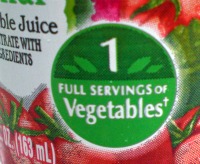
As a side dish for your meals, consider buying frozen vegetables. The microwaveable varieties are incredibly easy to prepare. Usually you just add a tablespoon or two of water and microwave it for a dozen minutes or so depending on the size (check the package directions). I manage to eat quite a lot of broccoli, brussel sprouts, cauliflower, spinach, and asparagus this way because it's so easy to make.
Note: A lot of my tips are focused on time saving, because many of us lead such busy lives. But if you've got the time, inclination, and skills, by all means purchase or grow fresh veggies for the maximum health benefit.
Fruits. Fruit is another of the foods that lower blood pressure that many people have a difficult time consuming enough of. One obstacle is the time involved preparing the fruit; you have to wash it, slice it, etc.
So what I often do is buy to easy-to-handle varieties. For example, oranges are a pain to peel, but Clementines (a.k.a. Cuties) and other "easy peel" varieties take no time at all. Bananas, apples, and raisins or craisins are other fruits that require little or no time to prepare and eat.
Also consider dried fruits. These are the ultimate in no-prep, easy storage, and portability.
Dairy. Low-fat or fat-free dairy foods are an excellent source of vitamins, minerals, and protein. But dairy products are only effective as foods that lower blood pressureyou if you avoid the high-fat varieties.
If you currently drink regular milk, consider switching low-fat milk. You may want to aim for the eventual goal of drinking skim milk, the lowest-fat milk variety available.
An excellent snack or meal replacement is low-fat cottage cheese paired with a piece of fruit such as a small apple. It a dish that's low in fat, sugar, and salt, but provides a healthy dose of vitamins, protein, and other nutrients. And obviously very quick to prepare.
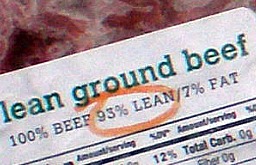
Lean Meats, Poultry, & Fish. The chicken breast is probably the one of the healthiest protein foods that lower blood pressure. But don't fry it! The white-meat chicken breast is very high in protein and extremely low in fat.
When buying hamburger, choose the lowest fat variety you can find. These days, I settle for nothing less that 93/7 hamburger, which means 93% lean with only 7% fat.
At least twice a week, include fish such as salmon in your diet as well. While salmon may seem to be a bit higher in fat, the omega nutrients in the fish are in fact very good for heart health.
Healthy Fats & Oils. There are really only three steps I actively take to make sure I'm consuming enough healthy fats and oils.
First, I eat cold-water fish such as salmon at least once or twice per week.
Second, I cook with healthy cooking oil, usually extra virgin olive oil.

And third, I take fish oil supplements. Carlson's liquid fish oil is high-purity fish oil that has only a slight fishy taste.
And third, I cook with healthy cooking oil, usually extra virgin olive oil. You can get virgin olive oil in a spray can, which is great when grilling on a barbecue or electric Foreman grill.
Tips on Decreasing Your Sodium Intake
A theme that runs through all the groups of foods that lower blood pressure is that they are low in sodium. As mentioned above, a high-sodium diet puts you at risk for high blood pressure. It's therefore critical to eat low-sodium foods most of the time.
Unfortunately, though, it's relatively easy to eat too much salt. Restaurants love to put it in their food, canned goods are full of it, and who would ever eat french fries without it? But if you're serious about lowering your blood pressure, you need to recognize that excess salt is Enemy Number One.
So start at home. Look for opportunities to replace the salt that you are adding to your food, with alternative herbs and spices.
For example, Salt-Free Mrs. Dash is one seasoning that everyone should have on their spice rack. A natural blend of herbs and seasonings, you get tons of flavor without any added sodium. A few spices I use all the time include black pepper, chili powder, cinnamon (in my coffee, mostly), and chives.
Here's a table that describes common ways to use herbs and spices. This is from the NIH's Guide to Lowering Blood Pressure (See bottom of page for a link):
| Herbs & Spices | Â | Use In |
| Basil | Â | Soups and salads, vegetables, fish, meats |
| Cinnamon | Â | Salads, vegetables, breads, snacks |
| Chili Powder | Â | Soups, salads, vegetables, fish |
| Cloves | Â | Soups, salads, vegetables |
| Dill Weed/Seed | Â | Fish, soups, salads, vegetables |
| Ginger | Â | Soups, salads, vegetables, meats |
| Marjoram | Â | Soups, salads, vegetables, beef, fish, chicken |
| Nutmeg | Â | Vegetables, meats, snacks |
| Oregano | Â | Soups, salads, vegetables, meats, snacks |
| Parsley | Â | Salads, vegetables, fish, meats |
| Rosemary | Â | Salads, vegetables, fish, meats |
| Sage | Â | Soups, salads, vegetables, meats, chicken |
| Thyme | Â | Salads, vegetables, fish, chicken |
Next time you're grocery shopping, pick up a few of these spices. Put away the salt shaker, and start experimenting with these ingredients when you cook the various foods that lower blood pressure at home. (This morning I added chili powder and chives to my usual egg white omelet recipe, and it was quite tasty. ![]() )
)
The next step is to pay attention to sodium content when you're shopping. According to the NIH, most Americans should not consume more than 2,400 mg (2.4g) of sodium per day. Your doctor might even recommend less. But some foods on the grocery shelves are chock full of salt.
Food labels are your protection. Make sure that when shopping you check every label for the sodium content of that food per serving. The % Daily Value column will help you judge whether the food you're about to buy contains an excessive amount of sodium.
Learn How to Control Your Blood Pressure
High blood pressure is no joke. It can lead to heart attack, stroke, and other medical conditions that you don't want to have.
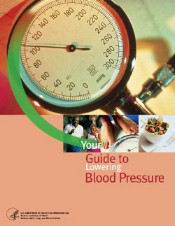
Whether you currently have high blood pressure or not, consider eating more of the foods that lower blood pressure. Doing so can help you achieve a healthier, leaner lifestyle.
For more tips on how to keep your blood pressure under control, read this free booklet from the National Institutes of Health:
Free Guide to Lowering Blood Pressure
In this free ebook, you'll find more information about foods that lower blood pressure. It also discusses risk factors for heart disease, how to find your target weight, and managing your blood pressure drugs as prescribed by your doctor.
Home > A Simple Diet > Foods that Lower Blood Pressure
Like This Page?
If you found the page above interesting, fun, or useful, please click the "Like" and/or "Share" button below. Feel free to leave a comment as well. Thanks very much!
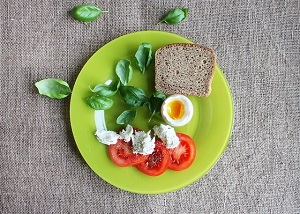
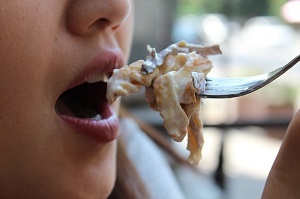
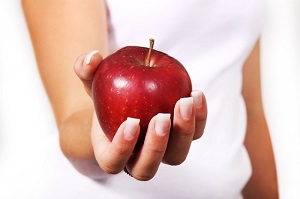
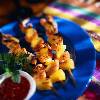
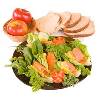
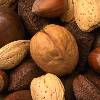
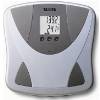
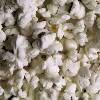

New! Comments
Have your say about what you just read. Leave me a comment in the box below.